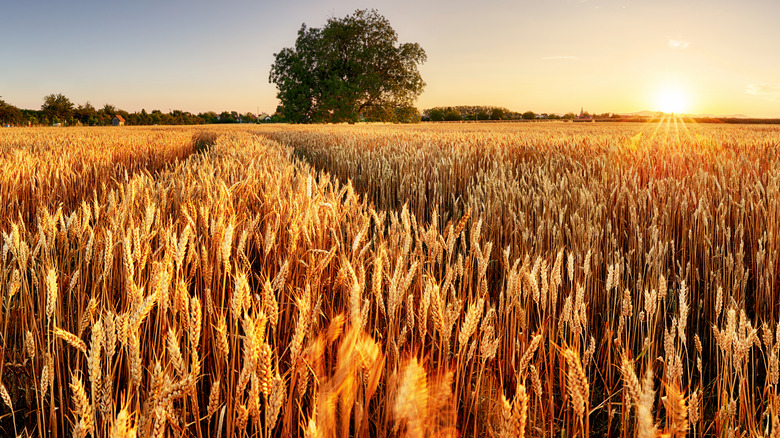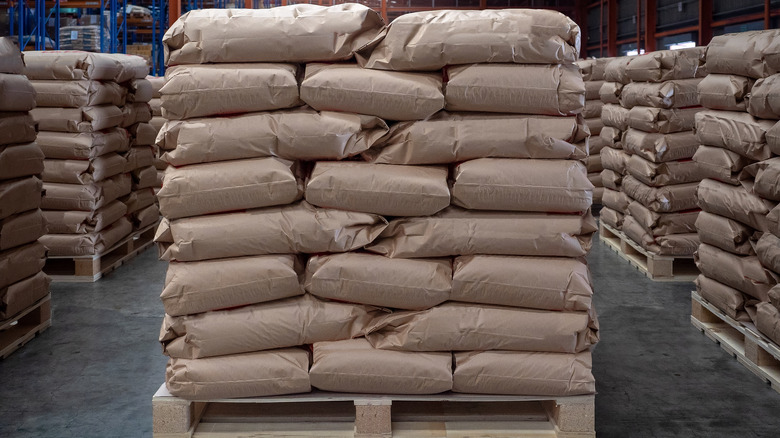Why We Might See A Flour Shortage In 2023
Most of the Northern Hemisphere might be seeing heat records broken this summer — Scientific American says in Britain alone, heat records were set three times in a span of a few hours — but it appears we're not seeing the last of these temperatures. In fact, thanks to climate change, weather scientists at the World Meteorological Organization have warned that record heat highs could well become the new normal (via UN News).
During a press conference where he unveiled his organization's latest findings on extreme weather, Petteri Taalas, Secretary-General of the World Metrological Organization told reporters that his group was "expecting to see major impacts on agriculture. During the previous heatwaves in Europe, we lost big parts of harvest. And under the current situation — we are already having the global food crisis because of the war in Ukraine — this heatwave is going to have a further negative impact on agricultural activities."
Weather is closely tied to agricultural yields
The news doesn't get better, because the World Metrological Organisation's Taalas says whether or not we're able to get our act together to bring global temperatures down, "the negative trend in climate will continue at least until the 2060s, independent of our success in climate mitigation" (via UN News). It appears that climate change could affect the U.S. food supply.
Derek Lemoine, Associate Economics Professor for the University of Arizona, pointed out in The Conversation that when temperatures rise above 85 to 90 degrees F, yields for crops like corn, soybeans, and cotton begin to fall. He further adds that one acre of farmland can expect to lose profits for every extra 3.6 degrees F our thermometer climbs. And if we're considering agricultural impact by looking at wheat crops, Kansas State University's Agronomy Updates warns that wheat is happiest at between 54 to 72 degrees F and that the longer and hotter it is, the greater experts see the potential for crop yield loss.
Flour stocks could decline in 2023 thanks to climate change
So does this mean we're likely to see less wheat, and as a result, less flour when 2023 comes around? An agricultural Magic 8 ball might tell you that "signs point to yes," but that guess would be based on what we know today. A rapidly warming world, per scientists like Derek Lemoine in The Conversation, could certainly see a decline in wheat crop yields thanks to heat stress. Yet nothing is set in stone. While Trading Economics shows that wheat prices rose dramatically this year to surpass $1,200 a bushel over supply fears triggered by Russian aggression in Ukraine, the price of wheat has since dropped down to $775 a bushel thanks to forecasts from the USDA saying that wheat supplies were in for a sharp increase due to better-than-expected harvests and decreased demand.
So while prices may not be as low as they were around March of 2019 when it cost $400 a bushel, as seen in Trading Economic's charts, wheat prices will continue to decrease, per Investing.com, at least for now.


